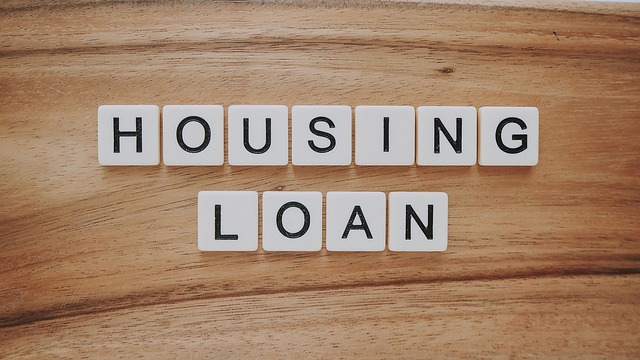Understanding Reverse Mortgages and Investment Options in Canada
A reverse mortgage allows Canadian homeowners aged 55 and older to access their home equity without selling their property. This financial product converts a portion of home equity into cash, providing funds that can be used for various purposes including investment opportunities. Understanding how reverse mortgages work and the potential for investing proceeds requires careful consideration of terms, costs, and long-term financial implications.

How Reverse Mortgages Function in Canada
Reverse mortgages operate differently from traditional mortgages. Instead of making monthly payments to a lender, homeowners receive funds while retaining ownership of their home. The loan amount plus interest becomes due when the homeowner sells the property, moves permanently, or passes away. In Canada, homeowners can typically access 10% to 55% of their home’s appraised value, depending on age, location, and property type.
The funds received can be taken as a lump sum, regular payments, or a combination of both. No monthly mortgage payments are required, though homeowners must continue paying property taxes, insurance, and maintenance costs. The loan balance grows over time as interest compounds on the outstanding amount.
Investing in Reverse Mortgages as Financial Products
Investing in reverse mortgages refers to purchasing these financial instruments as investment vehicles. Institutional investors and private lenders often buy reverse mortgage portfolios or participate in securitized products backed by reverse mortgage loans. These investments typically offer steady returns based on the interest rates charged to borrowers.
For individual investors, direct investment in reverse mortgages is generally not available. However, some investment funds and real estate investment trusts (REITs) include reverse mortgage-backed securities in their portfolios. These products can provide exposure to the growing reverse mortgage market while offering diversification benefits.
Investing Reverse Mortgage Proceeds Strategically
Homeowners who receive reverse mortgage funds face important decisions about how to use these proceeds. Investment options range from conservative fixed-income securities to more aggressive growth strategies. Many financial advisors recommend maintaining a portion in liquid, low-risk investments to cover unexpected expenses.
Common investment approaches include dividend-paying stocks, government bonds, guaranteed investment certificates (GICs), and balanced mutual funds. The key consideration is ensuring that investment returns can potentially offset the compounding interest on the reverse mortgage loan. However, there’s no guarantee that investments will outperform the loan’s interest rate.
Comparing Reverse Mortgages to Home Equity Loans
Home equity loans and reverse mortgages both allow homeowners to access their property’s value, but they operate quite differently. Home equity loans require regular monthly payments and have fixed repayment terms, typically 5 to 30 years. Borrowers must demonstrate sufficient income to qualify and make payments throughout the loan term.
Reverse mortgages don’t require monthly payments or income verification for qualification. The loan becomes due only when specific triggering events occur. However, reverse mortgages typically carry higher interest rates and fees compared to traditional home equity loans. The total cost over time can be significantly higher, especially if the homeowner remains in the property for many years.
Understanding Proprietary Reverse Mortgage Options
Proprietary reverse mortgages are private lending products offered by individual lenders rather than government-insured programs. In Canada, these products may offer higher loan amounts or more flexible terms compared to standard reverse mortgage products. Some proprietary programs cater to higher-value properties or unique situations.
These private reverse mortgages often come with different fee structures, interest rates, and qualification requirements. Borrowers should carefully compare proprietary options with traditional reverse mortgage products to understand the trade-offs. Professional financial advice is particularly important when considering proprietary products due to their varied terms and conditions.
| Product Type | Provider Example | Key Features | Estimated Annual Rate |
|---|---|---|---|
| Standard Reverse Mortgage | HomeEquity Bank | No monthly payments, ages 55+ | 6.99% - 8.99% |
| Home Equity Line of Credit | Major Banks | Flexible access, monthly payments required | Prime + 0.5% - 2% |
| Traditional Home Equity Loan | Credit Unions | Fixed payments, lower rates | 5.95% - 7.45% |
| Proprietary Reverse Mortgage | Private Lenders | Higher loan amounts, varied terms | 7.5% - 10.5% |
Prices, rates, or cost estimates mentioned in this article are based on the latest available information but may change over time. Independent research is advised before making financial decisions.
Making Informed Financial Decisions
Reverse mortgages represent a significant financial commitment that affects long-term wealth and estate planning. The decision to pursue a reverse mortgage should involve careful analysis of current financial needs, alternative funding sources, and the impact on heirs or estate beneficiaries.
Potential borrowers should obtain quotes from multiple lenders, understand all associated costs, and consider how the loan might affect government benefits or tax situations. Independent financial counseling is often recommended before proceeding with a reverse mortgage application.
The growing popularity of reverse mortgages in Canada reflects an aging population seeking financial flexibility in retirement. While these products can provide valuable access to home equity, they require thorough understanding and careful consideration of long-term implications. Whether using proceeds for daily expenses or investment purposes, homeowners should ensure their decision aligns with their overall financial strategy and retirement goals.




